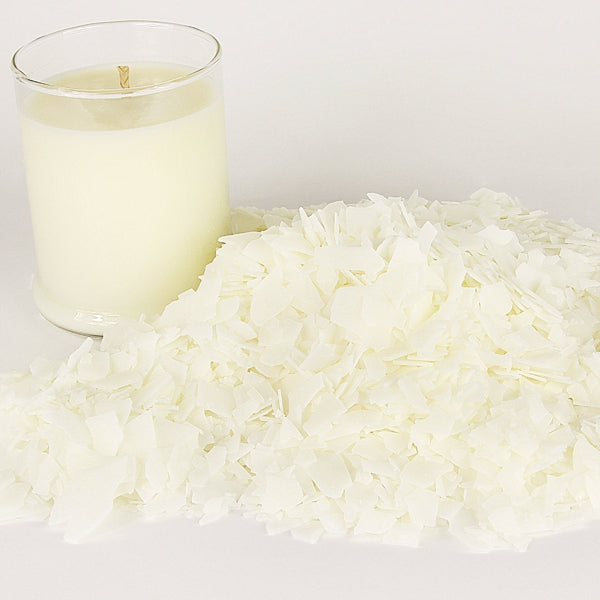Encounter the Tranquility of Crystal Soy Candles and Home Fragrance
Encounter the Tranquility of Crystal Soy Candles and Home Fragrance
Blog Article
From Wick to Wax: Comprehending the Chemistry Behind Soy Wax Candles and Their Ecological Effect
As we illuminate our areas with the cozy glow of candles, there exists a world of complex chemistry behind the seemingly straightforward act of lighting a soy wax candle light. Join us as we unwind the scientific intricacies behind soy wax candle lights and discover their implications on our atmosphere.
Soy Wax Vs. Paraffin Wax
When contrasting soy wax and paraffin wax for candle light production, it is important to understand the distinctive attributes and advantages of each material. Soy wax is a natural, renewable resource derived from soybean oil, making it naturally degradable and eco-friendly - candles. On the other hand, paraffin wax is a result of petroleum refining, which raises worries concerning its environmental influence and sustainability
Soy wax candles burn cleaner and emit less residue contrasted to paraffin wax candles, making them a much healthier selection for indoor air top quality. Additionally, soy wax has a lower melting factor, enabling for a longer-lasting candle light that distributes scent more properly. Paraffin wax, on the various other hand, has a tendency to burn faster and less cleanly, potentially launching unsafe chemicals right into the air.
From a sustainability point of view, soy wax is favored for its biodegradability and eco-friendly sourcing, straightening with the growing consumer preference for eco aware items. While paraffin wax has actually been a standard selection in candle light making due to its cost and ease of usage, the shift in the direction of environmentally friendly options like soy wax is getting energy in the sector.
Chemical Composition of Soy Wax

Burning Process in Soy Candles
The chemical make-up of soy wax straight influences the combustion process in soy candles, affecting factors such as melt time, scent release, and environmental impact. When a soy candle is lit, the heat from the fire thaws the wax near the wick. This fluid wax is after that attracted up the wick due to capillary activity. As the liquid wax gets to the fire, it undergoes and evaporates combustion. The combustion procedure involves the vaporized hydrocarbons in the wax reacting with oxygen airborne to produce heat, light, water vapor, and carbon dioxide.
The burning efficiency of soy candles is affected by the pureness of the soy wax and the top quality of the wick. A clean-burning soy candle with an effectively sized wick will lessen and generate a steady fire soot formation. This not only extends the shed time of the candle light yet also boosts the launch of scents. Furthermore, soy wax candle lights have a reduced ecological influence contrasted to paraffin candle lights due to their eco-friendly and naturally degradable nature.

Environmental Benefits of Soy Wax

Considered a lasting alternative to conventional paraffin wax, soy wax offers noteworthy ecological benefits that make his explanation it a popular option among eco-conscious customers. One substantial advantage of soy wax is its eco-friendly sourcing. Soy wax is stemmed from soybean oil, which is predominantly grown in the USA. The farming of soybeans assists support regional farmers and decreases the dependence on non-renewable fossil fuels used in paraffin wax manufacturing. In addition, soy wax is naturally degradable, implying it breaks down normally without releasing harmful contaminants right more information into the atmosphere. This characteristic makes soy wax candle lights an extra eco pleasant alternative compared to paraffin wax candles, which are made from petroleum, a non-renewable source. Soy wax burns cleaner and produces much less residue than paraffin wax, adding to far better interior air high quality and reducing the demand for cleaning and maintenance. On the whole, the environmental advantages of soy wax line up with the expanding demand for lasting and eco-friendly products in the market.
Recycling and Disposal Factors To Consider
Recycling and appropriate disposal of soy wax candle lights play a critical function in preserving environmental sustainability and reducing waste in houses and neighborhoods. When it involves recycling soy wax candle lights, the very first step is to make sure that the candle light has burned totally. This can be achieved by allowing the candle light to melt up until the wick is no much longer usable, and then allowing the staying wax cool and solidify. Once the wax has actually strengthened, it can be carefully removed from the container.

In terms of disposal, if recycling is not a choice, soy wax candle lights are naturally degradable and can be securely gotten rid of in most home waste systems. It is always suggested to inspect with local reusing centers or waste management services for specific standards on candle light disposal to make certain correct handling and environmental defense.
Final Thought
In verdict, the chemistry behind soy wax candles discloses their environmental benefits over paraffin wax candles. Soy wax, obtained from soybean oil, burns cleaner and creates less residue when compared to paraffin wax.
When contrasting soy wax and paraffin wax for candle light production, it is necessary to comprehend the distinctive attributes and advantages of each material (soy wax candles).Soy wax candles melt cleaner and give off less soot contrasted to paraffin wax candles, making them a much healthier selection for indoor air top quality.Taken into consideration a sustainable choice to standard paraffin wax, soy wax provides notable ecological advantages that make it a popular option among eco-conscious customers. Soy wax burns cleaner and generates much less soot than paraffin wax, contributing to far better interior air top quality and reducing the demand for see cleaning and maintenance.In final thought, the chemistry behind soy wax candles reveals their environmental benefits over paraffin wax candle lights
Report this page